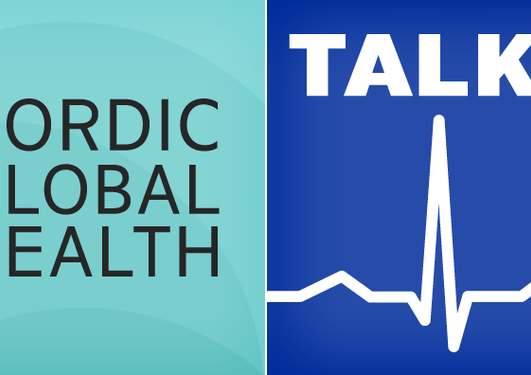Neonatal health and care in low-income countries – how do we move forward?
CIH Professor Thorkild Tylleskär’s Nordic Network Global Health talk addressed that while we have been improving survivability in children under 5, it is not enough. He spoke about what we need to focus on now to achieve SDG 3.1.

Main content
A group of Global Health researchers from all the Nordic countries have been meeting regularly for a number of years. Two years ago, they began plans for an education collaboration (learn more). January 2021 the Network started a monthly webinar series, “Nordic Global Health Talks”. Each participating institution will take a turn hosting the webinar, which is based at the Global Health Section of the University of Copenhagen.
The Centre for International Health (CIH) at the University of Bergen (UiB) hosted the second webinar, 3 February. Centre Director, Bente E. Moen, welcomed participants virtually to a sunny, wintery Bergen, and introduced Professor and Paediatrician, Thorkild Tylleskär.
A Nordic family history
Born in Denmark, raised and educated (largely) in Sweden, and now living and working in Norway, Tylleskär is the very essence of a Nordic Global Health researcher. He began his talk by telling the story of his own family, where 5 short generations ago, his great-great-great grandmother had 5 children, 4 of whom did not live to 5 years – 3 not the first year – and the mother died shortly before the death of her fifth child. Today, a century later, mother and child health in the Nordic countries is some of the best in the world and only 2.4 / 1000 (WHO 2018) children die in Norway before their 5th birthday, and only around 2 / 100 000 (WHO 2019) mothers die of birth complications.

SDG 3.1
SDG 3 states: Ensure healthy lives and promote well-being for all at all ages. Target 3.1 states: By 2030, reduce the global maternal mortality ratio to less than 70 per 100,000 live births.
Today, there are approximately 140 million births annually, and 5-6 million children under 5 die every year. In the Abstract for his talk, Tylleskär wrote:
“Child mortality (of children below 5 years of age) has been steadily decreasing over the last decades. Neonatal mortality (of children below 28 days of age) has not decreased as much. The Sustainable Development Goal no 3.1 aims to reduce neonatal mortality in each country to below 12 per 1000 live births. Many low-income countries today are above 25 per 1000 live births which means that a reduction by half is needed.”

Way forward
After presenting an overview of some of the most important recent interventions for reducing newborn mortality, Tylleskär focused on pneumonia / breathing issues as being a concrete target. He and colleagues in Uganda as well as 2 Swedish PhD students have recently published the results of a study in the New England Journal of Medicine. Their work underlined the importance of trained, competent health staff and facilities for optimising mother and child survivability, particularly around the time of birth.
He discussed a framework for prioritising intervention research initiatives as we move forward to 2030.

References:
- Yoshida S, Rudan I, Lawn JE, Wall S, Souza JP, Martines J, et al. Newborn health research priorities beyond 2015. Lancet 2014;384:e27-9.
- Souza JP, Widmer M, Gülmezoglu AM, Lawrie TA, Adejuyigbe EA, Carroli G, et al. Maternal and perinatal health research priorities beyond 2015: an international survey and prioritization exercise. Reprod Health 2014;11:61.
- Yoshida S, Martines J, Lawn JE, Wall S, Souza JP, Rudan I, et al. Setting research priorities to improve global newborn health and prevent stillbirths by 2025. Journal of global health 2016;6:010508.
- Waiswa P, Okuga M, Kabwijamu L, Akuze J, Sengendo H, Aliganyira P, et al. Using research priority-setting to guide bridging the implementation gap in countries - a case study of the Uganda newborn research priorities in the SDG era. Health research policy and systems 2019;17:54.
- Chan G, Storey JD, Das MK, Sacks E, Johri M, Kabakian-Khasholian T, et al. Global research priorities for social, behavioural and community engagement interventions for maternal, newborn and child health. Health research policy and systems 2020;18:97.
